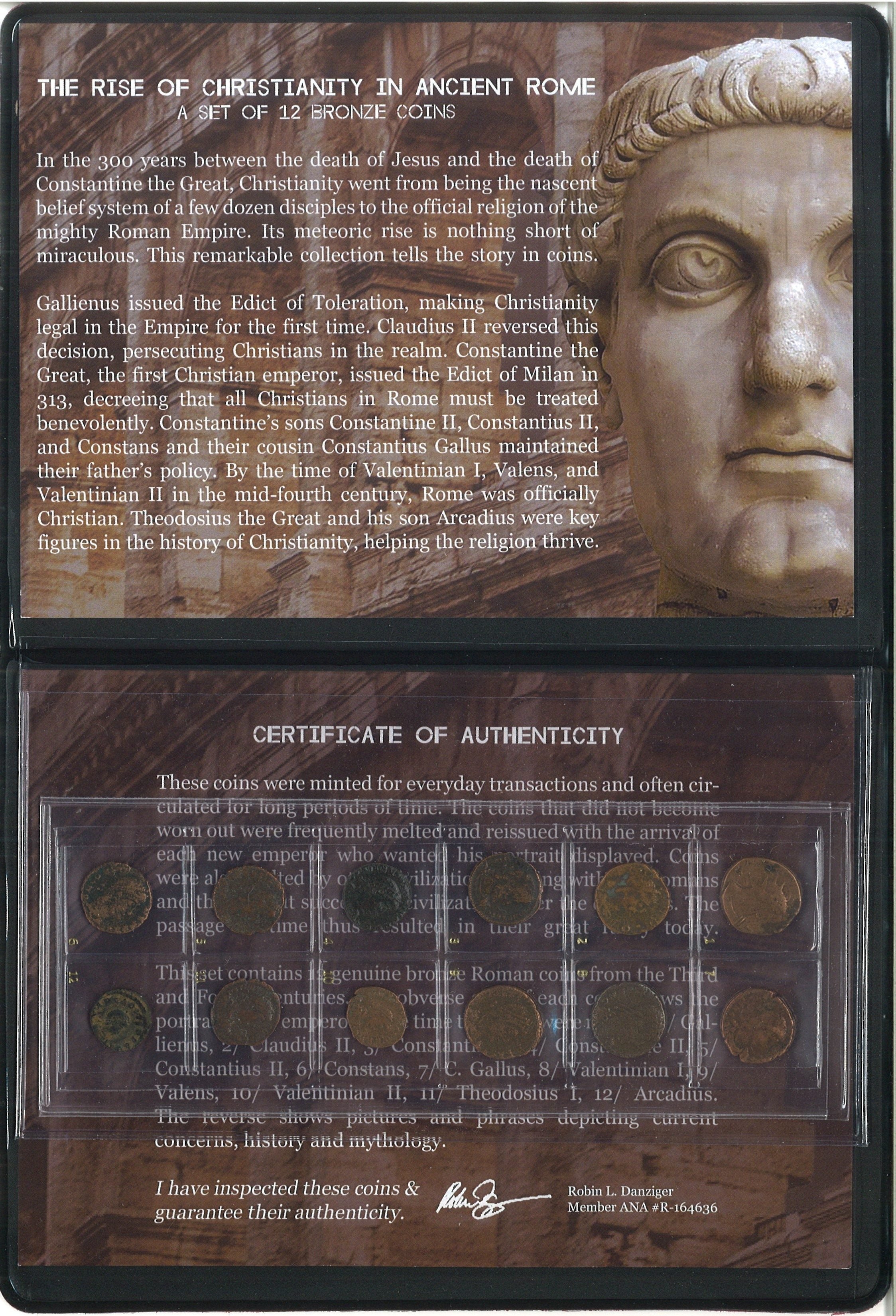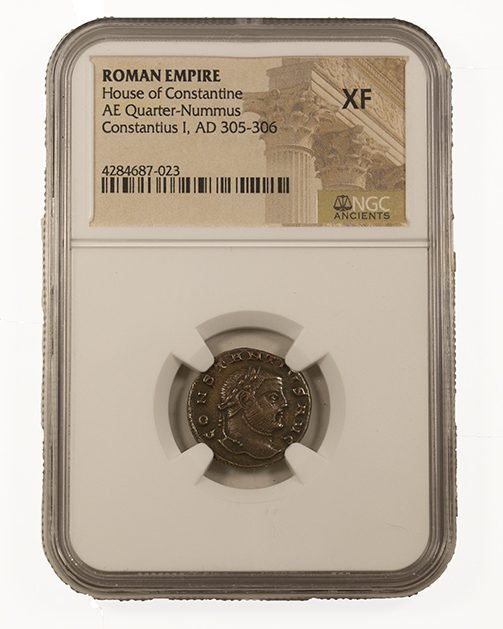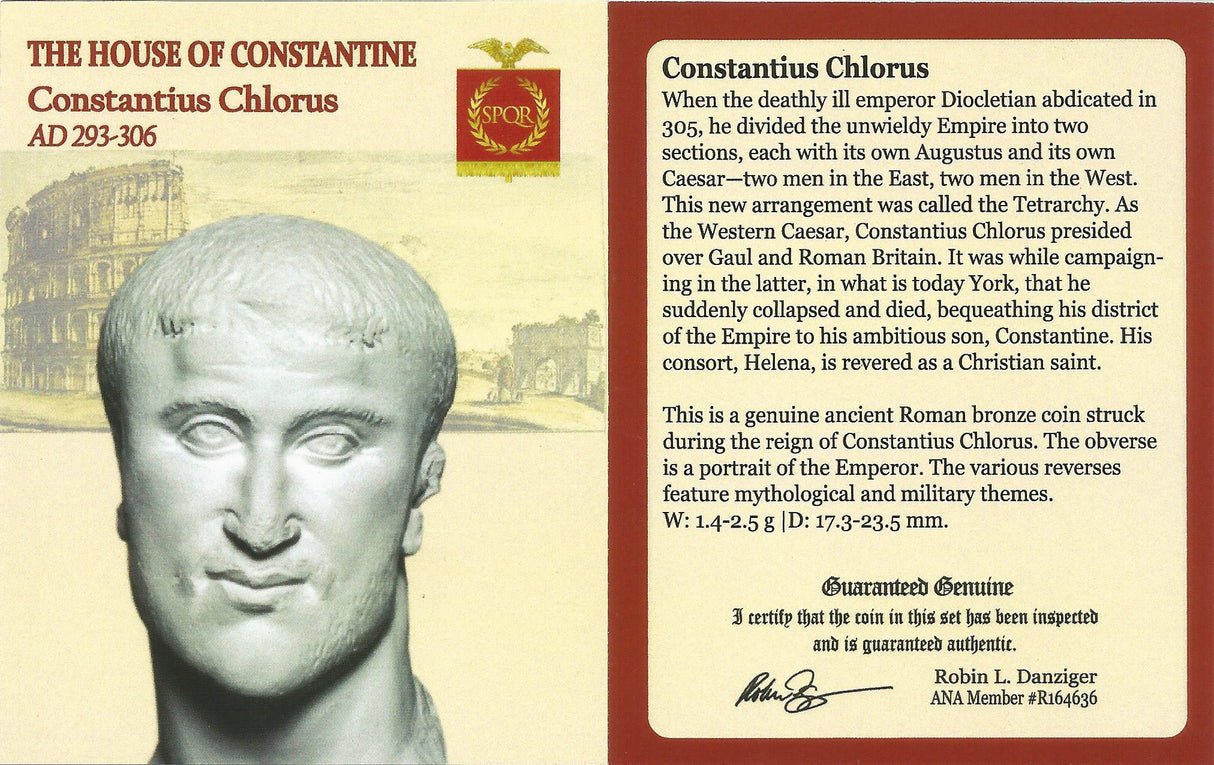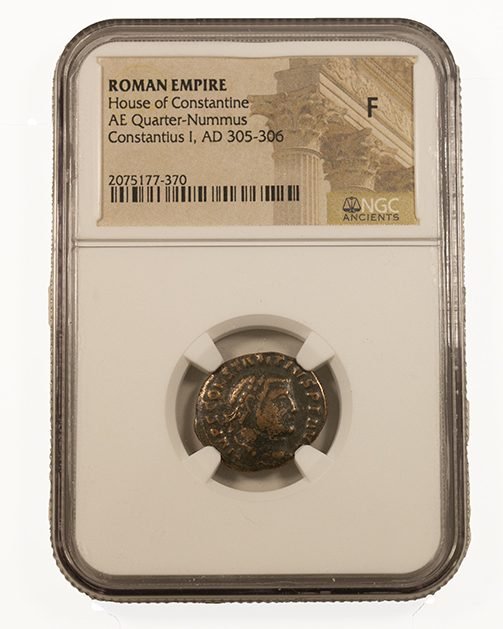Roman AE Of Constantinopolis (AD 330-346) Epfig Hoard NGC
Coins in images are examples only.
In the year 330, Constantine the Great-established a city on the Bosporus, what had been a sleepy town called Byzantium. He christened the new city, New Rome, but it came to be known as the City of Constantine—Constantinople. Constantinopolis, as it was known at the time, was also the name given to the deity—the pagan goddess who was appointed to protect the new city. From 330 to 340 AD, Constantine and his sons struck a coin commemorating the founding of the city, as well as the goddess. The portrait shows her helmeted bust dressed in military garb, carrying a spear, surrounded by her name.- -The coin's reverse shows the goddess Victoria, inspired by Nike in Greek mythology. But she looks somewhat different. The reverse of the coin is shown on the front of the holder. Why? There is a reason for this. In 312 AD, Constantine began the process of converting the official religion of the Roman Empire to Christianity, but still needed to transition the population from traditional paganism. One of the effects of this was the evolving design of the image of Victoria, who gradually, over the years morphed into the image of a ”Guardian Angel.“
Coins in images are examples only.
In the year 330, Constantine the Great-established a city on the Bosporus, what had been a sleepy town called Byzantium. He christened the new city, New Rome, but it came to be known as the City of Constantine—Constantinople. Constantinopolis, as it was known at the time, was also the name given to the deity—the pagan goddess who was appointed to protect the new city. From 330 to 340 AD, Constantine and his sons struck a coin commemorating the founding of the city, as well as the goddess. The portrait shows her helmeted bust dressed in military garb, carrying a spear, surrounded by her name.- -The coin's reverse shows the goddess Victoria, inspired by Nike in Greek mythology. But she looks somewhat different. The reverse of the coin is shown on the front of the holder. Why? There is a reason for this. In 312 AD, Constantine began the process of converting the official religion of the Roman Empire to Christianity, but still needed to transition the population from traditional paganism. One of the effects of this was the evolving design of the image of Victoria, who gradually, over the years morphed into the image of a ”Guardian Angel.“
Coins in images are examples only.
In the year 330, Constantine the Great-established a city on the Bosporus, what had been a sleepy town called Byzantium. He christened the new city, New Rome, but it came to be known as the City of Constantine—Constantinople. Constantinopolis, as it was known at the time, was also the name given to the deity—the pagan goddess who was appointed to protect the new city. From 330 to 340 AD, Constantine and his sons struck a coin commemorating the founding of the city, as well as the goddess. The portrait shows her helmeted bust dressed in military garb, carrying a spear, surrounded by her name.- -The coin's reverse shows the goddess Victoria, inspired by Nike in Greek mythology. But she looks somewhat different. The reverse of the coin is shown on the front of the holder. Why? There is a reason for this. In 312 AD, Constantine began the process of converting the official religion of the Roman Empire to Christianity, but still needed to transition the population from traditional paganism. One of the effects of this was the evolving design of the image of Victoria, who gradually, over the years morphed into the image of a ”Guardian Angel.“





























